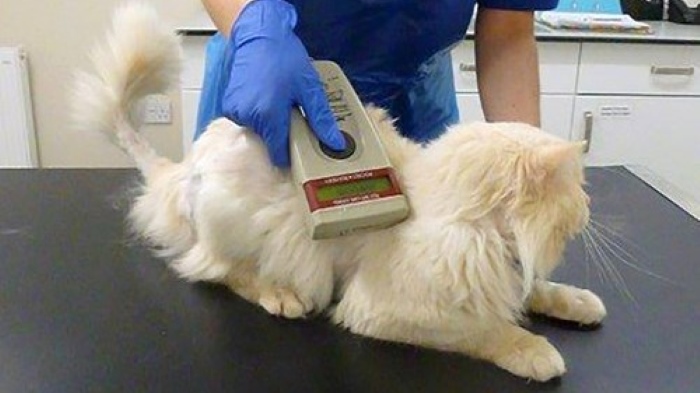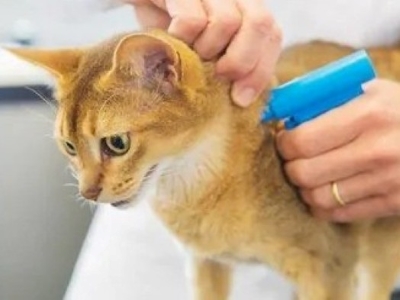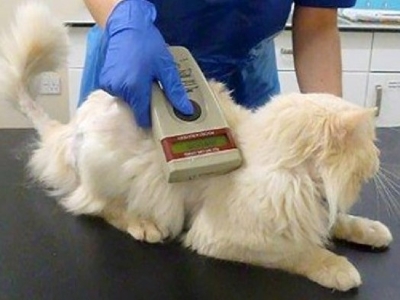As a loving cat owner, ensuring the safety and security of your feline friend is undoubtedly one of your top priorities.

Microchipping has emerged as a widely adopted solution to help reunite lost cats with their worried owners. But how much does it cost to microchip a cat?
In this article, we’ll delve into the details of cat microchipping, its benefits, the factors affecting the cost, and what you can expect in terms of expenses.
The Importance of Microchipping Your Cat
A tiny, permanent identifying chip is inserted under your cat’s skin, often between the shoulder blades, during the microchipping procedure.
This chip has a special identification number that connects to your contact information in a database for pet registries.
The advantages of microchipping are as follows:
- Increased Chance of Reunion
According to various studies, microchipped pets are much more likely to be reunited with their owners if they get lost or end up in a shelter[1].

This is because shelters and veterinary clinics routinely scan lost pets for microchips.
- Permanent Identification
Unlike collars and tags, which can fall off or be removed, microchips are a permanent form of identification.

They can’t be lost or tampered with, providing a reliable means of proving ownership.
- Quick and Painless Procedure
Your cat will experience almost no discomfort during the quick, easy, and painless microchipping operation.
It requires a straightforward injection, much like a vaccine.
- Cost-Effective
While there is an initial cost to microchip your cat, it’s a one-time expense that can potentially save you a lot of money and emotional distress in case your cat goes missing.
The Microchipping Procedure
The microchipping procedure is straightforward and typically takes only a few minutes. Here’s what you can expect:
Preparation
The veterinarian will have you fill out some paperwork and update your contact information.
Make sure to provide accurate details so that your cat can be easily reunited with you if found.

Implantation
The vet or trained professional will use a syringe-like device to inject the tiny microchip beneath your cat’s skin.
This is usually done between the shoulder blades.
Scanning
The veterinarian will scan the chip with a portable scanner to make sure it is secure and operational.
The scanner reveals the chip’s particular identifying number.
Registration
After the procedure, you need to register the microchip with your contact information in a pet registry database.
This step is crucial, as it’s the information that shelters and vets will use to contact you if your cat is found.
Dr. Tammy Hunter, DVM; Cheryl Yuill, DVM, MSc, CVH Explained, “The loose skin between the shoulder blades is gently pulled up, and the needle is quickly inserted. The applicator trigger is squeezed, injecting the microchip into the tissue. After insertion, the cat is scanned to make sure that the chip is reading properly.” on VCA Hospitals.
How Much Does It Cost?
The cost of microchipping a cat can vary depending on several factors, including your geographical location, the type of microchip used, and whether the procedure is done as part of a larger package (such as spaying, neutering, or vaccination[2]).
On average, the cost typically falls within the range of $25 to $50.
This is a relatively small investment considering the potential peace of mind it can provide knowing that your cat has a better chance of being returned to you if lost.
Factors Influencing the Cost
- Geographical Location
Depending on where you reside, the cost of living and access to veterinary care might differ significantly.
Fees for microchipping services may be a little bit more expensive in urban areas and regions with a higher cost of living.
- Type of Microchip
There are different types of microchips available, each with its own features and benefits.
Basic microchips that only transmit a unique identification number tend to be less expensive than more advanced options that offer additional features like temperature monitoring or GPS tracking.
- Veterinary Clinic or Shelter
The location where you choose to have your cat microchipped can also influence the cost.
Some animal shelters and nonprofit organizations offer microchipping at a lower cost as part of their community services.
Additional Services
If you opt to microchip your cat as part of a package deal that includes other services such as vaccinations, spaying[3] or neutering, or a wellness exam, the overall cost might be reduced.
The benefits outweigh the Cost
While the price of microchipping might seem like an additional expense, it’s essential to weigh it against the potential benefits.
Microchips provide a permanent form of identification that cannot be lost or removed, like a collar or tag.

This can significantly increase the odds of being reunited with your cat, especially if they are found far away from home.
According to VCA Hospitals, “Cats with microchips were found to be more than twenty times as likely to be reunited with their families.“
FAQs
Can the microchip be tracked using GPS?
No, standard microchips do not have GPS tracking capabilities. They only transmit an identification number when scanned. However, there are GPS tracking devices available that can be attached to your cat’s collar if you’re interested in real-time location tracking.
Is microchipping painful for my cat?
The procedure is relatively quick and minimally invasive, often likened to getting a shot. Most cats tolerate it well with minimal discomfort. Local anesthesia is usually not necessary, and your cat should recover swiftly.
How long does a microchip last?
As long as your pet lives, microchips will function properly. Because they are composed of materials that won’t harm your cat, they are biocompatible.
Can the microchip get lost or move around under the skin?
It’s rare, but occasionally, a microchip might move slightly from its original position. However, it won’t “get lost” inside your cat’s body. The microchip is encased in a biocompatible shell that prevents it from disintegrating or moving too far from the injection site.
Can my cat’s microchip cause health problems?
Microchips are considered safe. Adverse reactions are extremely rare. However, if you notice any abnormalities or changes around the injection site, consult your veterinarian.
Conclusion
When it comes to the safety and well-being of your beloved feline companion, the cost of microchipping is a small price to pay for the peace of mind it offers.
While the actual cost can vary based on location and other factors, the benefits of having a permanent form of identification for your cat far outweigh any financial concerns.
Remember, microchipping is an investment in your pet’s safety, ensuring that they have the best chance of returning to your loving arms should they ever go astray.
Reference:
- Lost Cat – What to do if your cat goes missing | Cats Protection
- Spaying in Cats | VCA Animal Hospital
- What to know about cat vaccinations | WebMD

Dave is our best team member when it comes to taking care of pets on daily basis. This is because he used to be a full-time pet sitter before joining CatLikesBest. Besides contributing his precious knowledge on cat care tips and everyday-use pet products, he still does pet sitting as part of his hobby in his free time.

